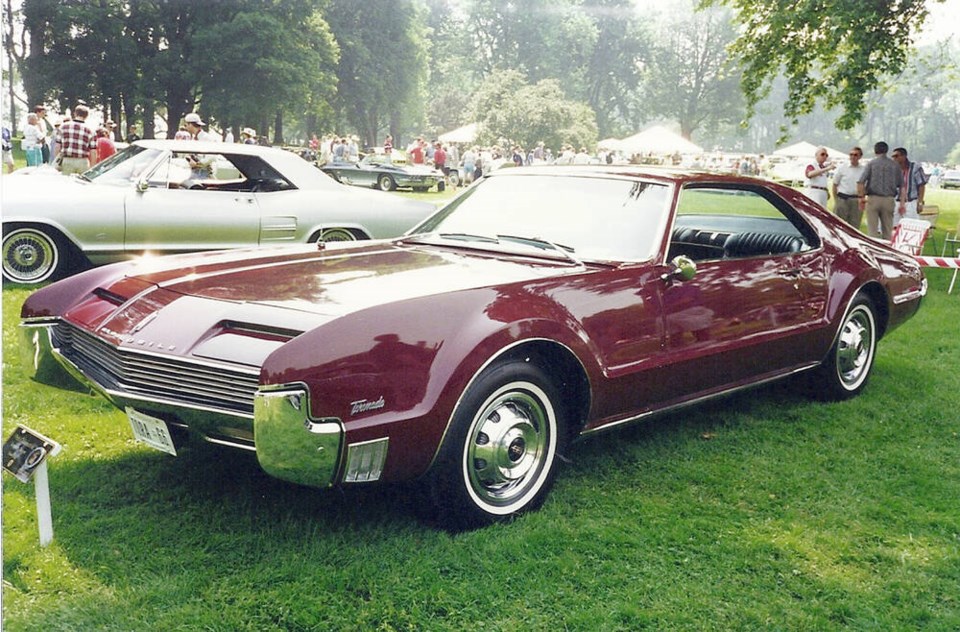Front-wheel drive is now so prevalent most motorists don’t think much about whether their car has it or not. But it wasn’t until the 1980s that the American industry made the transition in a significant way, although there had already been fwd pioneering work in both Europe and America.
England’s Alvis and France’s Tracta introduced production front drive cars in the late 1920s. In 1931, the German Audi’s Front model was truly advanced with a transverse engine and front-wheel drive, predicting by almost 30 years the famous 1959 BMC Mini’s configuration and many present layouts.
In the United States the Christie Front Drive Motor Co. had front-drive racers as early as 1904 and production models by 1905. Ruxton and Gardner also tried fwd but gave up.
In other competition, American Harry Miller’s front drive racers dominated Indianapolis in the 1920s. But by far the best known front drive American car was the Cord with its 1929-31 L-29 model and 1936-37 810/812 “coffin nose” models.
France’s Citroen Traction Avant did much to popularize front drive. It arrived in 1934 and lasted until 1955, but it was the cross engine BMC Mini launched in 1959 set the modern trend.
Although it continued in Europe, front drive languished in North America until it was revived in 1966 by GM’s innovative Oldsmobile division.
It was a part of General Motors’ imaginative engineering endeavours of the 1960s that included Chevrolet’s rear-engine Corvair, Pontiac Tempest’s “hanging rope” driveshaft, and pioneering passenger car turbocharging in the Olds F-85 Jetfire V-8 and Corvair Monza Spyder.
One of GM’s 1960s experiments that had a long-term impact was Oldsmobile’s front-wheel drive. GM had studied fwd right after the Second World War when it was considering producing a smaller car, which didn’t materialize.
In the late 1950s the idea was revived and promoted by John Beltz, a bright young Oldsmobile engineer who would later become Oldsmobile’s general manager. Olds already had a proud reputation for innovation that included the fully automatic hydraulic “Hydra-Matic” transmission in 1940, and, along with Cadillac, the overhead valve, short-stroke V-8 engine in 1949.
Oldsmobile wanted a specialty car to compete with the successful Riviera from sister division Buick, and the very popular Ford Thunderbird. Beltz desired something with a little more engineering pizzazz and convinced the corporation to let Oldsmobile build a front drive car.
Experimentation began in 1959 with the not yet introduced Oldsmobile F-85’s aluminum V-8 transversely mounted and driving the front wheels. Problems with this configuration led to fitting the F-85 engine longitudinally.
The final result was the 1966 front-wheel drive Oldsmobile Toronado. It was a sensation. With a wheelbase of 3,023 mm (119 in.), overall length of 5,359 mm (211 in.) and weight of 2,041 kg (4500 lb) it was so big some sceptics predicted that front drive would not be successful in such a large vehicle.
Olds fitted a seven litre (425 cu in.) overhead valve, 385 horsepower V-8 mounted longitudinally with the torque converter in its usual location on the rear of the engine. The three-speed Hydra-Matic transmission, however, was rotated 180 degrees and mounted on the left side of the engine. Drive was transmitted from the torque converter to the transmission via a 51 mm (2.0 in.) wide chain.
To make room for the half-shafts, Oldsmobile used longitudinal front torsion bars rather than coil springs and anchored them under the front seats. Rear suspension was a beam axle with single-leaf springs.
What really impressed Toronado buyers was the flat floor and fully upholstered rear seat cushion. By eliminating the transmission hump and driveshaft tunnel Oldsmobile had produced a true six-passenger car.
The styling was almost as dramatic as the engineering. The Toro’s long nose was made to appear even longer by stretching the fenders out ahead of the hood to emphasize the front-wheel drive feature.
Hidden headlamps pioneered by the 1936 front drive 810 Cord were also fitted. Substantial front and rear fender flares presented a muscular look, and the short, sloped fast-back ended in an abrupt vertical chop called a Kammback, a drag-reducing precept laid down in the 1930s by German aerodynamicist Wunibald Kamm.
The Toronado was very well received by a motoring press that loved technical innovation. Motor Trend made it their Car of the Year and Car Life gave it their Engineering Excellence award.
Almost 41,000 1966 Toronados were sold, the best sales year of its first generation which lasted until 1970. In 1967 Cadillac cloned the Toro with its front-wheel drive Eldorado, and those corporate twins remained GM’s front drivers until the 1980 X-cars (Chevrolet Citation, et al.).
The Toronado was a bold technical move that provided GM with a reservoir of invaluable engineering experience, and the confidence to make its almost universal transformation to front-wheel drive in the 1980s.



